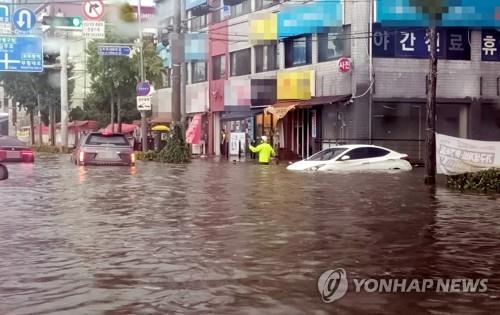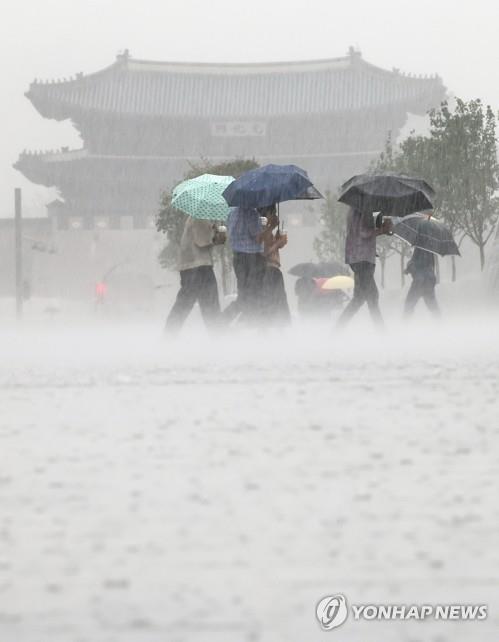- California Assembly OKs highest minimum wage in nation
- S. Korea unveils first graphic cigarette warnings
- US joins with South Korea, Japan in bid to deter North Korea
- LPGA golfer Chun In-gee finally back in action
- S. Korea won’t be top seed in final World Cup qualification round
- US men’s soccer misses 2nd straight Olympics
- US back on track in qualifying with 4-0 win over Guatemala
- High-intensity workout injuries spawn cottage industry
- CDC expands range of Zika mosquitoes into parts of Northeast
- Who knew? ‘The Walking Dead’ is helping families connect
Central region suffers damage after heavy rain
Up to 170 millimeters of rain battered the country’s central region, including the capital area, on Monday, the weather agency said, flooding homes, buildings and other properties.
The Korea Meteorological Administration (KMA) issued heavy rain watches earlier in the morning across the capital and the western port city of Incheon as well as northern parts of Gyeonggi Province that surrounds Seoul and northern Gangwon Province.
Such advisories are issued when precipitation is predicted to surpass 60 millimeters in a span of three hours or 110 mm in 12 hours.


This photo, provided by a reader, shows roads in the western port city of Incheon submerged on Aug. 8, 2022. (Yonhap)
In Yeoncheon, 62 kilometers north of Seoul, 171 mm of rain had fallen as of 3 p.m., as well as 87.9 mm in Incheon, the KMA said. In Seoul, about 60 mm of rain fell, while there was 78.5 mm of rain in Cheorwon, about 71 kilometers northeast of Seoul.
Casualties were not reported in those areas, but property damage occurred, including the displacement of two residents in Cheorwon.
Authorities also received numerous reports of submerged vehicles and farmlands, destruction of roads and fallen trees from the areas hit by the torrential downpours.
The weather agency earlier said the country’s central regions and northern Gyeonggi Province are forecast to receive downpours combined with strong winds, thunder and lightning as a clash of cold and warm air masses produces a stationary front.











